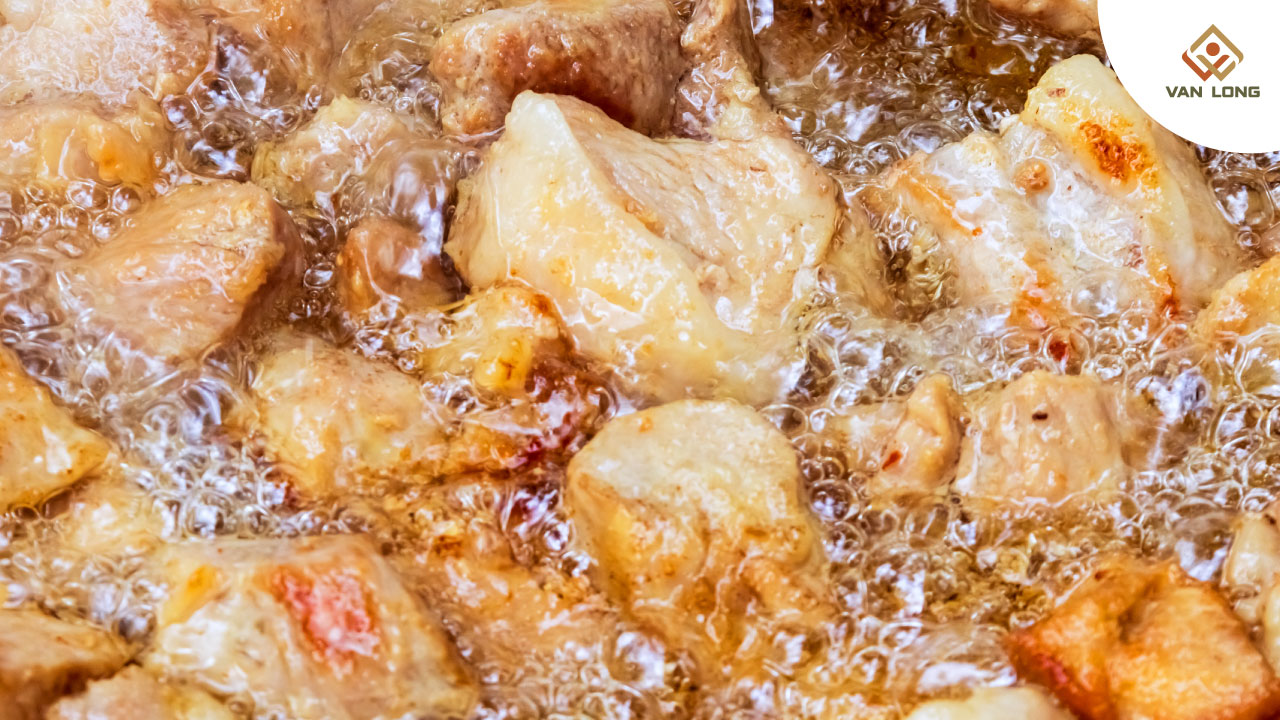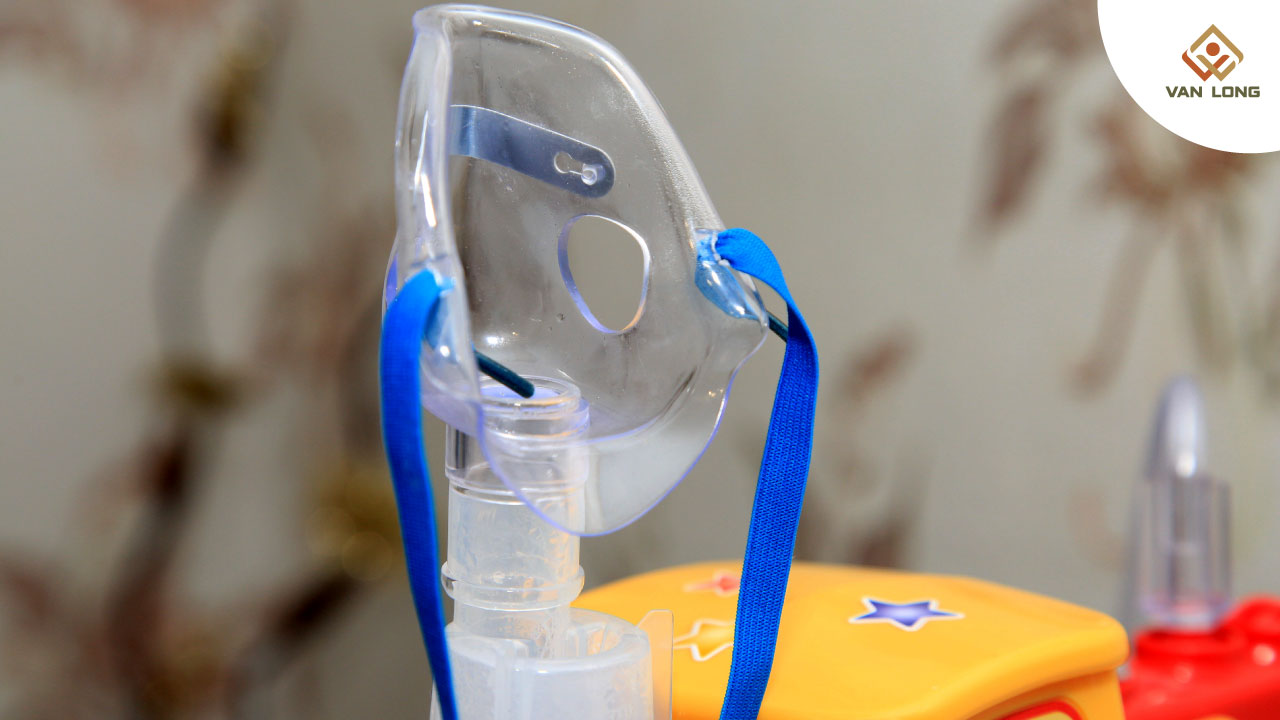Hen suyễn là một bệnh lý hô hấp mạn tính ảnh hưởng đến hàng triệu người trên toàn thế giới. Đây không chỉ là vấn đề liên quan đến đường thở mà còn là một tình trạng đòi hỏi sự quản lý toàn diện, từ việc tuân thủ phác đồ điều trị, sử dụng các thiết bị hỗ trợ như máy xông khí dung, đến việc điều chỉnh chế độ ăn uống và lối sống.

Điều ít người biết là thực phẩm hàng ngày – dù quen thuộc và tưởng chừng vô hại – cũng có thể tác động đáng kể đến tình trạng bệnh. Một số món ăn có thể kích thích đường thở, làm tăng phản ứng viêm hoặc thậm chí khởi phát cơn hen cấp. Ngược lại, nếu chọn đúng thực phẩm, người bệnh sẽ có thêm “lá chắn” tự nhiên giúp kiểm soát triệu chứng và nâng cao chất lượng sống.
Bài viết này sẽ giúp bạn nhận diện 5 nhóm thực phẩm không tốt cho người bị hen suyễn, giải thích cơ chế ảnh hưởng của chúng, đồng thời chia sẻ nguyên tắc xây dựng chế độ ăn hợp lý. Ngoài ra, chúng ta sẽ tìm hiểu cách kết hợp với thở khí dung và chăm sóc hô hấp tại nhà để đạt hiệu quả kiểm soát bệnh tốt hơn.

Nhiều người vẫn nghĩ bệnh hen suyễn chỉ liên quan đến yếu tố môi trường như bụi, phấn hoa, khói thuốc, hoặc yếu tố di truyền. Tuy nhiên, nhiều nghiên cứu y học đã chỉ ra rằng chế độ ăn uống cũng có ảnh hưởng trực tiếp đến tình trạng viêm đường thở và khả năng kiểm soát bệnh.
Một số cơ chế chính cho thấy vì sao thực phẩm có thể tác động đến hen suyễn:
Do đó, chế độ ăn hợp lý là một phần quan trọng trong kế hoạch chăm sóc sức khỏe tổng thể cho người bị hen suyễn, bên cạnh các biện pháp hỗ trợ như sử dụng máy xông khí dung để làm dịu và thông thoáng đường thở khi cần thiết.

Đối với nhiều bệnh nhân hen suyễn, cơ địa dị ứng là yếu tố nguy cơ hàng đầu. Khi tiêu thụ thực phẩm gây dị ứng, hệ miễn dịch phản ứng quá mức, dẫn đến co thắt phế quản, khó thở, khò khè.
Các loại thực phẩm dễ gây dị ứng phổ biến:
Lời khuyên:
Chế độ ăn nhiều dầu mỡ, thức ăn nhanh hoặc thịt chế biến sẵn làm tăng nguy cơ béo phì, từ đó ảnh hưởng tiêu cực đến khả năng hô hấp. Lớp mỡ thừa quanh ngực và bụng hạn chế sự giãn nở của phổi và gây khó khăn cho việc hít thở.
Thực phẩm cần hạn chế:
Tác động tiêu cực: Ăn quá no trong một bữa còn tạo áp lực lên cơ hoành – cơ quan quan trọng giúp điều khiển nhịp thở – từ đó làm nặng thêm triệu chứng.
Một số loại thực phẩm chế biến sẵn hoặc bảo quản lâu thường chứa chất bảo quản như sulfite và natri bisulfit. Đây là những tác nhân có thể gây kích ứng đường thở và làm khởi phát cơn hen ở người nhạy cảm.
Ví dụ:
Lời khuyên: Ưu tiên nguyên liệu tươi, chế biến tại nhà để giảm nguy cơ hít phải các chất kích thích khi ăn.
Các món ăn quá cay, mặn hoặc chua có thể gây kích ứng niêm mạc hô hấp và khởi phát cơn ho, đặc biệt ở người có kèm trào ngược dạ dày-thực quản.
Ví dụ:
Rượu, bia chứa histamine hoặc sulfite – các chất có thể gây phản ứng dị ứng và kích ứng đường thở. Cồn còn ảnh hưởng đến khả năng chuyển hóa thuốc điều trị hen.
Tác hại khác: Hút thuốc lá, kể cả hút thụ động, làm tăng tiết nhầy, gây co thắt phế quản, làm bệnh nặng thêm.

Bên cạnh việc tránh nhóm thực phẩm có hại, người bị bệnh hen suyễn nên bổ sung các thực phẩm hỗ trợ giảm viêm, tăng sức đề kháng và giúp đường thở khỏe mạnh hơn.
Nhóm thực phẩm khuyến khích:
Uống đủ nước giúp làm loãng đờm, hỗ trợ quá trình thở khí dung khi cần thiết, giúp dung dịch thuốc hoặc dung dịch muối sinh lý phân tán đều và thấm sâu vào đường thở.

Ngoài chế độ ăn, các thiết bị hỗ trợ như máy xông khí dung đóng vai trò quan trọng trong việc giảm triệu chứng và cải thiện chất lượng sống của người bệnh.
Lợi ích khi kết hợp chế độ ăn hợp lý với thở khí dung:
Lưu ý: Việc sử dụng máy cần tuân thủ hướng dẫn của nhân viên y tế, đảm bảo vệ sinh máy để tránh nhiễm khuẩn.
Chế độ ăn là một phần quan trọng trong chiến lược quản lý bệnh hen suyễn. Việc nhận diện và hạn chế 5 nhóm thực phẩm không tốt sẽ giúp giảm nguy cơ khởi phát cơn hen. Khi kết hợp với các biện pháp hỗ trợ hô hấp như thở khí dung, người bệnh sẽ có khả năng kiểm soát triệu chứng tốt hơn, nâng cao chất lượng sống và giảm nguy cơ biến chứng.
——————————
CÔNG TY TNHH PHÁT TRIỂN THƯƠNG MẠI DỊCH VỤ VÂN LONG
YOUR NEEDS - OUR BUSINESS
Hotline: (028) 3526 2468 / 098.484.0440
Email: cskh@vl-groups.com
Website: www.vl-groups.com
Địa chỉ:
- Văn phòng HCM: Tòa nhà Fosco, D35 + D36 - 40 Bà Huyện Thanh Quan, P.Xuân Hòa, TP. HCM
- Trung tâm bảo hành: 373/14 Nguyễn Kiệm, P.Đức Nhuận, TP.HCM
- Văn phòng Hà Nội: Khu VP Hồng Hà, 38.3/1 Ngõ 109 Trường Chinh, P.Phương Liệt, Q.Thanh Xuân, Hà Nội
- Kho Tổng: 938 Quốc Lộ 1A, P.Linh Xuân, TP.HCM
🌼 Shopee: https://shopee.vn/vanlonggroups
🌼 Tiktok: https://www.tiktok.com/@thietbichamsocsuckhoe
🌼 Tiki: https://tiki.vn/cua-hang/cham-soc-suc-khoe-van-long
🌼 Lazada: https://www.lazada.vn/shop/van-long-our-needs-your-business